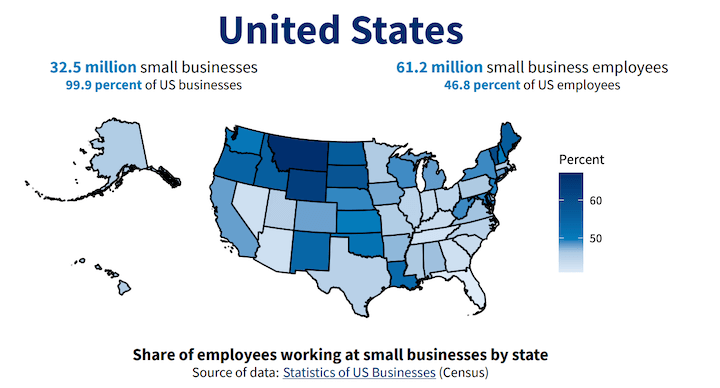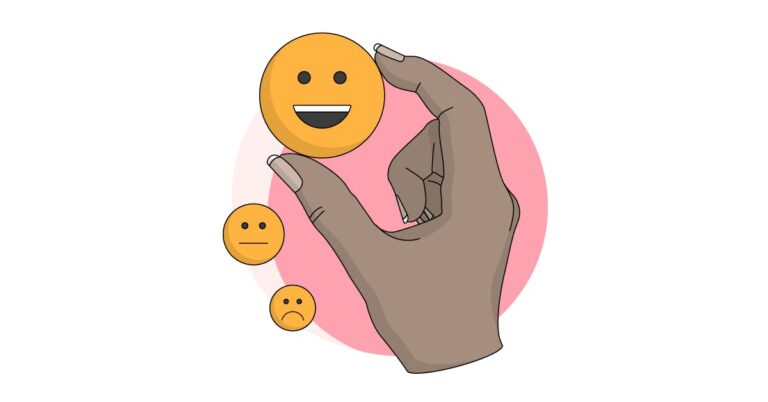Currently, there are 11 campaign objectives to choose from.
- Facebook is finicky. What works well for some time may suddenly shift due to algorithmic changes or, quite often, unknown or irrational reasons.
- Lower costs. With testing, we can learn, gain valuable insights about our audiences, find out what does and does not resonate with them, and lower our costs over time.
- Reach your whole audience. What may captivate one user in an audience may not with another, so it’s best practice to always run tests in your campaigns.
The Facebook dynamic ads feature uses automation to test different combinations of ad copy and creatives for you and will then serve those combinations accordingly.
With top-of-funnel campaigns such as reach, awareness, and engagement, we have seen success in running ads and boosted posts to various audiences.
How to carry out Facebook A/B testing (the RIGHT way)
We find that upper-funnel campaign objectives help clients to test on smaller budgets, and often lead to higher CTRs and lower CPAs compared to some conversion campaigns.
1. Determine your goal
There are dozens of variables to test with your Facebook ads. We’ll go over variables in more depth in the next section, but here is the shortlist:
- If you are looking to drive more website traffic at a lower cost, test optimizing for link clicks in one ad set and landing page views in another ad set to see which can get you lower CPCs.
- If you are looking to drive more leads at a lower cost, test out a lead generation campaign objective versus a website traffic campaign objective (where you are sending people to a dedicated lead generation landing page) to see which can get you more leads at a lower cost.
- If your goal is to drive more video views, test out several video variations using the same copy or one video with several ad copy variations to see which one audiences watch a longer duration, according to the % watched metrics.
- Looking to improve your CTR? Test 2-3 ad copy variations using one creative in the first round of testing. If the CTR is low (below 1%), this is typically indicative of your ads not resonating with your audience, so test new ad copy. If that doesn’t work, test a new audience. If your CTR is above 1%, test new creatives to see if you can raise it further to a healthy 2%+.
2. Determine your variable
When working with smaller budget accounts, we typically recommend using ad set level budget so you have more manual control on how much you spend, how, and where.
- Campaign objectives
- Audiences
- Optimization
- Ad level elements (copy, headline, creative, CTA, etc.)
If, for example, Facebook notices fewer impressions with an ad, but your data shows that it has a higher CTR higher or that it’s driving conversions at a lower cost, keep it running! Again, use the data.
3. Launch your first round of testing
Manual testing of ads is great, but if you want to move faster in serving ads, testing, learning, and optimizing on a limited budget, dynamic ads are an excellent way to do this.
4. Use Facebook’s data AND your own
However, if you want to test lower-funnel consideration or conversion campaigns, a budget that small will not do.
Dynamic ads quickly and effectively test various ad level assets while also saving time and money. By leveraging the system to put together combinations of ad copy and creatives together for you, especially in your prospecting campaigns, can give you quick insights through this system-led testing option.
5. Disable underperforming ads and move to the next variable
CBO can work well for prospecting audiences that use similar size audiences in the ad sets within, however, it does not work very well for small audiences, as we may see when testing smaller budgets or in retargeting campaigns. When working with smaller budget accounts, we typically recommend using ad set level budget so you have more manual control on how much you spend, how, and where.
6. Rinse and repeat
Advertisers can choose from two budget setting options in Ads Manager, one of them being at the campaign level using Campaign Budget Optimization (CBO) and the other at the ad set level.
What to A/B test in your Facebook ads
If you have a small budget, say /day, but your product or service costs much more than that. You may want to test upper-funnel campaign objectives that are less expensive to have your budget go further.
Once you run your ads long enough to see how performance is going, disable the ad(s) that were your underperformers and then determine what you want to test next. Oftentimes, after testing ad copy, we will then test creatives. So we’ll apply the winning ad copy to each of the ads, but change out the creatives to see which combination of copy and creatives are driving the most conversions.
1. Campaign objectives
Another way to A/B test campaign objectives is to see if you can drive more purchases or other conversions through a website traffic campaign versus a conversions campaign. Both can accomplish your conversion goal but in some instances, we’ve seen traffic campaigns drive more purchases at a lower cost. Upper funnel campaigns tend to be lower in cost, so it may be a worthwhile test for you and an effective way to have your budget go further.
On the flip side, traffic campaigns sending users to a lead generation dedicated landing page to complete a form there and off of Facebook, results in fewer leads at slightly higher costs, however, lead quality tends to be higher as people are more interested to learn more and leave the social platform to complete your form.
As mentioned above, there are several different variables you can test in your Facebook ads. Just make sure that you’re picking the best one for the metric you want to improve, and that you’re only testing one variable at a time.
As your test runs, check in to see how it’s going in the first few days. Make sure the ad set is out of the “Learning Period” before making any optimizations. What you may notice is that Facebook will somewhat quickly choose a favorite one or two of your active ads based on performance. But use your data as well to determine which ad(s) is/are the true winners.
For this example, let’s say our goal is to increase conversions and our variable is ad copy.
The best way to test your Facebook ads on a budget is to:
2. Audiences
Facebook A/B testing is important not only because it affords us valuable insights and saves us money, but also because Facebook frequently undergoes algorithm changes. Let’s close off with a brief summary of how to run Facebook A/B tests on a budget:
3. Optimization
Here is a closer look at variables you can test:
3 cost-effective methods of Facebook A/B testing
For example, our custom window insert client, Indow Windows, saw a dip in their lead volume and an increase in cost per lead for one lower-funnel ad set.
1. Run dynamic ad campaigns
Some of the best variables to test on a budget include:
Test various native and custom audiences in your ad sets. If your goal is to drive people to purchase a water bottle, some audiences you may want to test are people interested in water bottles, another targeting people interested in a competitors water bottle company, and a third may be your customer lookalikes.
As we mentioned earlier, if you can’t drive many conversions, particularly for a higher priced product or service, a conversion campaign is not going to perform well and Facebook will charge you quite a bit.
2. Test upper-funnel campaign objectives
Website traffic vs conversion campaigns
We know that testing our Facebook ads will ultimately save us money and increase revenue, but it can get expensive. Here are some tactics you can use to test your ads economically.
Whether you have one dollar or thousands of dollars to spend per day on your Facebook ads, keeping costs low by serving great ads is the name of the game. But what you think is a great ad may not actually be the greatest ad. With A/B testing, you can systematically nail down what the data says is the perfect ad for your audience.
You can start with as little as /day. Yes, you read that right. Though, there are some caveats. It depends on your campaign type.
We implement this tactic quite a bit to cut down on costs or help clients find more success on smaller budgets and we often see higher CTRs and lower CPAs compared to some conversion campaigns.
3. Use the ad set level budget
Each campaign type has optimization goal settings within its ad sets. For example, if you use the website traffic campaign, you can optimize for link clicks or landing page views. Test an ad set that uses one of each to see which performs better for you. Do you want more people clicking to the site and getting tagged with the Pixel or do you want perhaps fewer people but more interested in your content and allowing the landing page to fully load? Which one is lower in cost and can still accomplish my goals?
The smaller your budget, the slower the testing, learning, and optimizing will be. The more budget you can allocate, the quicker you can get out of the Learning Period, serve impressions, acquire performance data, learn, and take your next optimization steps.
The basic concept of Facebook A/B testing is to set a goal and then see which ad variation performs best to accomplish said goal. Here are some examples of goals you might be looking to achieve with your testing:
How much should I budget for Facebook A/B testing?
According to Adespresso, a good split test can increase ROI by 10x. So let’s make sure you know all of the steps of a good split test.
What we’ve seen from testing this across accounts and verticals is that lead gen campaigns drive higher lead volumes and at lower costs, however, they tend to also have lower quality leads.
While this has been our experience, see how it performs for you and whether quantity or quality are your goal.
Continue building with one single variable at a time. The more we test, find winners, and improve our performance, Facebook rewards us with lower ad costs.
To see if we could improve performance, we launched a duplicate campaign that optimized for awareness rather than conversions. Within two weeks, we raised their lead volume for this audience 1800% and reduced their cost per lead 94%.
Instead, try an awareness, reach, or website traffic campaign to re-engage with your warm audiences. While the campaign is optimizing for other goals, people can still convert if you add a landing page URL to your ad.
How to test Facebook ads on a budget: recap
The basic process of Facebook A/B testing is:
In order for us to understand which ad copy variation is our winner(s), we will want to launch 2-3 ads that are identical except for the ad copy. If we test more than one variable, then we won’t know if it was truly the ad copy that made a difference.
- Determine your goal
- Determine your variable
- Launch your first set
- Let data accumulate
- Disable underperforming ads
- Clone the winner and test a new variable
- Repeat
Finally, if you can, try to spend at least /day to start and as you begin seeing good results, increase your daily budget 10-15% per day.
- Campaign objectives
- Audiences
- Optimization
- Ad level variables
If you scale too quickly, that can sometimes backfire if Facebook isn’t able to spend your budget that day and then it may lower the quality of your campaign, thus raising costs. This way, you can learn and grow without wasting money and scale forward.
- Run upper-funnel tests
- Test upper-level campaign objectives
- Use the ad set level budget
If you can, try to spend at least /day to start and as you begin seeing good results and as you’re maxing out on your daily budget, increase your daily budget 10-15% per day.





